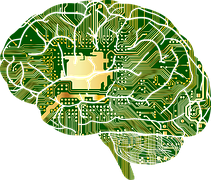“No miracle, just our brain” by Jules Morgan
October 26, 2016

Neuroplasticity is the brain’s ability to reorganize itself by forming new neural connections, allowing neurons (nerve cells) in the brain to compensate for injury and disease and to adjust their activities in response to new situations or to changes in their environment.
The following is from an article in The Lancet Neurology. Written by Jules Morgan, “No Miracle, Just Our Brian,” examines Norman Doidge’s book, The Brain’s Way of Healing.
To start talking about the end of a book is usually considered a spoiler. However, the afterword in the paperback edition of Norman Doidge’s book The Brain’s Way of Healing brings authenticity to Doidge’s collection of real-life stories of recovery from brain injury. In the afterword, he addresses the question that, he says, is likely to be asked: “If neuroplasticity is now accepted in neuroscience, why are these clinical approaches that make use of it not more widely available and mainstream?” It is a pertinent observation—if they work so well, why do they still have an air of quackery more than the conviction of hard science?
Doidge explains how neuroplasticity challenges current models of how the brain works, which understandably creates not only resistance and scepticism, but also calls for substantial clinical evidence.
Click here to visit The Lancet To read Morgan’s full article.